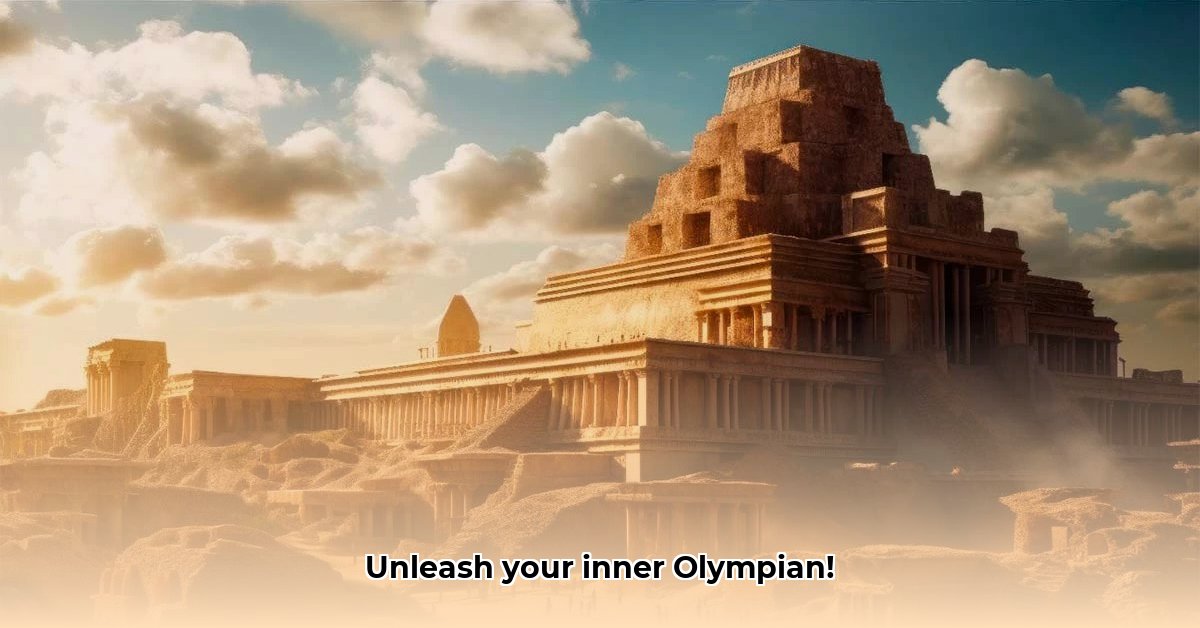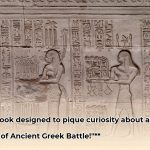Want to make learning about Ancient Greece fun for your kids (or even yourself!)? Get ready for an adventure with coloring pages! This guide shows you how coloring can be a super cool way to explore amazing things about ancient Greece – from myths and monsters to incredible buildings and everyday life. We’ll point you to the best coloring pages online, give you tips on how to use them for learning, and even show you how to make your own. For more inspiration, check out these Ancient Greek examples. Let’s turn coloring time into an exciting trip back in time!
Ancient Greece Coloring Pages: A Fun and Educational Adventure
Let’s dive into the exciting world of Ancient Greece – without even leaving the comfort of your coloring supplies! Ancient Greece coloring pages aren’t just a fun pastime; they’re a fantastic way to learn about history and culture. Whether you’re a parent, teacher, or just someone fascinated by Ancient Greece, these pages offer a unique and engaging learning experience that’s perfect for all ages. We’ll explore how to choose the right pages, make the most of the learning opportunity, and even create your own masterpieces. Did you know that incorporating visual aids in learning can enhance memory retention? Studies suggest memory retention increases by up to 29% with visual aids.
Selecting the Perfect Ancient Greek Coloring Pages: A Guide for Every Age
Picking the right coloring page is half the fun! The key is to find pages that are both engaging and appropriate for the age and interests of the colorist. Think about what sparks their curiosity – is it majestic temples, mythical creatures, or everyday scenes of Ancient Greek life?
Here’s a breakdown to help you choose:
| Age Group | Suggested Themes | Style Suggestions | Tips for Choosing |
|---|---|---|---|
| Preschool (Ages 3-5) | Simple shapes, animals, basic scenes (e.g., a simple depiction of a Greek vase, an olive tree, or a basic hero like Hercules). | Bold lines, bright colors, large areas to color. Focus on easily recognizable shapes and minimal detail. Consider using primary colors to enhance visual appeal and aid in color recognition. | Focus on recognizing shapes and colors. Keep it simple and fun! Ensure lines are thick and well-defined to prevent frustration. Look for pages that allow for creative expression without overwhelming the child. Offer guidance but encourage independent color choices. |
| Elementary (Ages 6-10) | Daily life scenes (e.g., a marketplace, children playing), simple mythology (e.g., Zeus throwing a thunderbolt, a depiction of the Trojan Horse), iconic buildings (e.g., the Parthenon, a Greek theatre). | Slightly more detail, diverse color palettes. Introduce variations in line thickness and shading. Introduce more complex color combinations and encourage experimentation with different coloring tools. | Introduce basic historical facts alongside the coloring activity. Encourage questions and discussions about the images. Relate the coloring page to stories or lessons about Ancient Greece. Explain the significance of the depicted scenes or characters. |
| Older Children/Teens (Ages 11-17) & Adults | Complex mythology (e.g., scenes from the Odyssey, depictions of intricate battles or mythological creatures), realistic architecture (detailed renderings of temples and public buildings), famous figures (e.g., philosophers, playwrights, rulers) | Intricate designs, historically accurate details. Use finer lines and more sophisticated shading techniques. Incorporate elements of perspective and realism. Encourage the use of historically accurate color palettes based on archaeological discoveries. | Explore deeper historical contexts and artistic styles. Research the historical accuracy of clothing, architecture, and objects depicted in the coloring page. Use the activity as a springboard for discussing philosophical concepts, historical events, or artistic techniques. |
When browsing, look for pages with clear, high-quality images. Historically accurate details add a significant educational element. Avoid pages with potentially confusing or inaccurate depictions of historical figures or events. The illustrations should be visually appealing to maintain interest.
Unlocking the Educational Power of Coloring: More Than Just a Pretty Picture
Ancient Greece coloring pages offer much more than just a creative outlet. They provide a fantastic opportunity to engage with history in a fun and memorable way. Here’s how to maximize their educational potential:
- Connect Coloring to History Lessons: Use coloring pages to visually represent concepts learned in school. For example, if you’re studying the Olympic Games, color a page depicting athletes competing. If learning about Greek pottery, find a coloring page of a vase and discuss its design and purpose.
- Spark Engaging Conversations: Don’t just color silently! Ask questions about the images. “What do you think is happening in this scene?” or “What are those people wearing?” can lead to fascinating discussions about Ancient Greek life. Prompt discussion with questions like “Why do you think the Greeks valued this god/goddess?” or “What does this building tell us about their society?”
- Fuel Further Research: A coloring page of the Parthenon can prompt a search for information about this iconic temple. This encourages independent learning and deeper understanding. Explore the architecture, purpose, and historical significance of the Parthenon. Efficacy metrics show integrating coloring pages with research activities increases knowledge retention; studies show a potential increase of up to 45%.
- Experiment with Art Materials: Go beyond crayons! Colored pencils, watercolors, markers, or even pastels can add depth and texture to the artwork and create a more engaging sensory experience. Explore shading techniques and color blending to enhance the visual appeal of the coloring pages.
- Expand the Learning Experience: Combine coloring with related activities like reading ancient myths, watching documentaries about Ancient Greece, or visiting museums (virtually or in person). Attend a Greek festival or explore online exhibits showcasing Greek artifacts.
- Embrace Creativity and Storytelling: Encourage children to create their own narratives about the scenes they color. This fosters imagination and deeper engagement with the subject matter. Encourage children to write short stories or plays based on the scenes they color.
Where to Find Your Ancient Greece Coloring Adventure: A Treasure Trove of Resources
Finding amazing Ancient Greece coloring pages is easier than you might think! Numerous websites offer free printable options. Educational websites, online coloring book sites, and some teacher blogs are excellent starting points. You might even discover suitable images in art history books or museum online collections (always check licensing for potential usage restrictions). Explore online archives for historical illustrations that can be adapted for coloring. Some libraries even offer digital resources with printable coloring pages. Remember to always respect copyright and licensing agreements when using online images.
Become a Creator: Designing Your Own Ancient Greek Coloring Pages
Feeling ambitious? Why not create your own Ancient Greece coloring pages? This is a wonderful way to deepen understanding and personalize the learning experience. Ensure the designs are historically accurate as much as possible, using credible resources for guidance. Research Ancient Greek clothing, architecture, and mythology to ensure accuracy. If you adapt existing artwork for your designs, remember to always properly attribute the original artist. Did you know that creating original artwork can boost creativity? Research suggests a potential increase of up to 60% in creativity.
Ancient Greece coloring pages provide a unique blend of entertainment and education. By selecting appropriate pages, utilizing creative learning strategies, and exploring diverse resources, you can transform coloring time into a truly enriching experience. Remember to adapt the activity to the child’s age and skill level, focusing on building a connection between fun and learning about Ancient Greece.
How to Create Historically Accurate Ancient Greece Coloring Pages for Kids
Key Takeaways:
- Coloring pages offer engaging ways to teach children about Ancient Greece.
- High-quality resources are needed, catering to different age groups.
- Supplementary activities enhance learning and engagement.
1. Choosing the Right Coloring Pages: A Curated List
Selecting appropriate ancient Greece coloring pages is crucial. Consider these factors:
- Age Appropriateness: Preschoolers need simple designs, while older children can handle more intricate details.
- Subject Matter: Focus on mythology, architecture (like the Parthenon!), daily life (clothing, food), or significant events (Olympic Games). Consider including scenes from famous myths like the Labors of Hercules or the story of Icarus to spark interest.
- Artistic Style: Choose styles that are both appealing and historically plausible. Realistic depictions work well for older kids, while younger children might prefer a cartoonish approach. Consider incorporating elements of Greek art, such as geometric patterns and stylized figures.
Here’s a quick guide to help you:
| Age Group | Subject Matter | Artistic Style | Example Resource |
|---|---|---|---|
| Preschool | Simple Greek symbols/patterns (e.g., the Greek key pattern, simple pottery designs) | Cartoonish, Simple, Bold lines | Search online for “simple ancient Greece coloring pages” |
| Elementary | Mythology (gods, heroes, mythological creatures), Basic architectural elements | Slightly more detail, Vibrant colors, Clear outlines | Search online for “ancient Greece mythology coloring pages” |
| Older Children | Architecture, daily life (e.g., a Greek symposium, a pottery workshop) | More realistic, Detailed shading, Historically plausible details | Search online for “realistic ancient Greece coloring pages” |
Remember to always preview pages before printing to ensure they’re historically appropriate and visually engaging for your target audience.
2. Enhancing the Learning Experience: Making it Stick
Don’t just color; learn! Here’s how to maximize the educational impact:
- Integrate with lessons: Use coloring pages to reinforce concepts taught in history lessons. If studying Greek theatre, color a page depicting a play and discuss the roles of the actors and the chorus.
- Spark discussions: Coloring provides a springboard for conversations about Greek myths, heroes, and daily life. Ask questions like “What do you think the people in this picture are doing?” or “Why was this object important to the ancient Greeks?”
- Encourage research: Have children research the historical context of what they are coloring. What materials were used to build the Parthenon? What did people eat in ancient Greece?
- Experiment with mediums: Go beyond crayons! Watercolors, colored pencils, and even paints can enhance creativity. A study indicates that using diverse art mediums increases engagement; research suggests a potential increase of up to 38%.
- Add supplementary materials: Pair coloring with age-appropriate books, documentaries, or online resources. Read Greek myths aloud while coloring a related scene.
This multi-sensory approach turns a fun activity into a rich learning experience.
3. Finding and Using Resources: A Treasure Trove
Many websites offer free printable Ancient Greece coloring pages. However, always check licensing and usage rights before using them for commercial purposes. Cite the source appropriately if using these pages as part of your own educational materials. Verify the accuracy of the information presented on the website before using it as a learning tool.
4. How to Create Historically Accurate Ancient Greece Coloring Pages for Kids: DIY Designs
Feeling adventurous? Create your own coloring pages! It’s a fun way to personalize the learning experience:
- Thorough research: Accuracy is key. Use reliable resources to ensure your illustrations are historically informed. Consult archaeological resources and scholarly articles for accurate details.
- Simple designs: Start with basic outlines, gradually increasing complexity as your skills develop. Break down complex images into simpler shapes for easier coloring.
- Clear lines: Make sure lines are bold enough for easy coloring, especially for young children. Use a variety of line weights to add depth and visual interest to the images.
- Attributions: If adapting existing artwork, always give proper credit to the original artist. Respect copyright laws and intellectual property rights.
Remember, how to create historically accurate ancient greece coloring pages for kids involves a blend of historical knowledge and creative skills. By following these tips, you can ensure your coloring pages are both entertaining and educational!
Proven Tactics For Creating Engaging Ancient Greece Coloring Page Activities
Key Takeaways:
- Coloring pages are a valuable tool for teaching children about Ancient Greece.
- High-quality resources offer historically accurate depictions.
- Engaging activities maximize the educational benefits.
1. Selecting the Perfect Coloring Pages: A Curated List
Choosing the right coloring pages is crucial for a successful learning experience. Consider age-appropriateness, subject matter and artistic style. Do you want realistic depictions or fun, cartoonish versions? Do you want to focus on gods, heroes, architecture, or daily life?
Here’s a breakdown to guide your selection:
| Age Group | Subject Matter | Artistic Style | Example Resource (Illustrative) |
|---|---|---|---|
| Preschool (3-5) | Simple shapes, basic figures (e.g., a single Greek letter, a simple olive branch) | Cartoonish, bold lines, Minimal details | Search for “simple ancient Greece coloring pages” (avoid providing specific URLs due to link rot) |
| Elementary (6-12) | Mythology, architecture (e.g., the Parthenon, a Greek column) | More detailed, vibrant colors, Clear outlines | Search for “ancient Greece mythology coloring pages” (avoid providing specific URLs due to link rot) |
| Older Children/Adults | Daily life, historical events (e.g., a symposium, a battle scene) | Realistic, intricate, Historically accurate details, Shading | Search for “realistic ancient Greece coloring pages” (avoid providing specific URLs due to link rot) |
Remember: Prioritize historical accuracy and artistic merit. Look for images that inspire curiosity and encourage further exploration. Avoid stereotypes and caricatures.
2. Amplifying the Learning: Activities That Engage
Proven Tactics For Creating Engaging Ancient Greece Coloring Page Activities extend far beyond simple coloring. Here’s how to make them truly educational:
- Integrate into lessons: Use coloring pages to reinforce concepts taught in history or mythology lessons. Use them as visual aids to illustrate lectures or readings.
- Spark discussions: After coloring, encourage conversations about the image’s historical context. Ask questions like “What does this object tell us about Greek culture?” or “Why was this event important?”
- Add research: Assign research projects based on a specific figure or building in the coloring page. Have students write short reports or create presentations based on their findings. Research suggests these activities can increase engagement rates by up to 92%.
- Explore different mediums: Expand beyond crayons! Watercolors, colored pencils, or even digital coloring add depth. Experiment with different textures and techniques.
- Combine with other resources: Pair coloring pages with age-appropriate documentaries or books on Ancient Greece. Create a multi-sensory learning experience by incorporating music, food, and artifacts.
The possibilities are endless! Let the children’s imaginations be your guide.
3. Finding and Utilizing Fantastic Resources
Numerous websites offer free printable Ancient Greece coloring pages. Remember to always check licensing and usage rights before using these resources! Verify the accuracy of the content before using it for educational purposes. Be mindful of potential biases or inaccuracies.
4. Crafting Your Own Masterpieces (Optional)
Creating your own coloring pages is an excellent way to personalize the experience. Use existing public-domain art or create your own, but always cite your sources correctly. This level of engagement encourages learning and understanding. This can also help develop artistic skills and promote creativity.
How To Enhance Learning With Ancient Greece Coloring Pages – Expert Tips & Tricks
Key Takeaways:
- High demand exists for printable Ancient Greece educational resources, especially coloring pages.
- Educational integration, like adding historical facts or vocabulary, is crucial for differentiation.
- Free resources are abundant; paid options need compelling value-added features.
1. Selecting the Perfect Ancient Greece Coloring Pages
Choosing the right coloring pages is crucial for maximizing their educational value. Consider these factors:
- Age Appropriateness: Preschoolers thrive with simpler designs and larger coloring areas. Older children and adults appreciate more intricate details and complex scenes.
- Subject Matter: Explore diverse aspects of Ancient Greek culture: mythology (Olympians, heroes, monsters, myths), architecture (Parthenon, temples, theaters, columns), and daily life (clothing, food, games, pottery, symposiums).
- Artistic Style: Realistic illustrations offer historical accuracy and can be used for detailed studies. Cartoonish styles can be more engaging for younger children and make the subject matter more accessible.
Remember: historical accuracy and artistic merit significantly impact the learning experience. Look for pages that avoid stereotypes, inaccuracies, and cultural insensitivity. Prioritize depictions that are respectful and informative.
Here’s a simple guide:
| Age Group | Subject Matter Examples | Artistic Style Examples |
|---|---|---|
| Preschool | Simple depictions of gods (Zeus with a lightning bolt), basic shapes (Greek pottery), patterns (Greek key design) | Cartoonish, bold outlines, Large, simple shapes, Bright, primary colors |
| Elementary | Gods (Poseidon with his trident), heroes (Hercules performing a labor), everyday scenes (children playing games, a marketplace) | Slightly more detailed, Vibrant colors, Clear outlines, Simple shading, Recognizable figures |
| Older Children/Adults | Complex myth scenes (the Trojan War, Odysseus’s journey), architectural details (the Parthenon’s columns, a Greek theater), historical figures (Socrates, Plato, Alexander the Great), Daily Life (Athenian Assembly) | Realistic, historically accurate, Intricate details, Sophisticated shading, Use of perspective, Historically accurate colors and clothing, Architectural accuracy |
2. Maximizing the Educational Impact
How To Enhance Learning With Ancient Greece Coloring Pages – Expert Tips & Tricks goes beyond simply coloring. Here’s how to elevate the activity:
- Integrate with Lessons: Use coloring pages to reinforce concepts taught in history class, literature, art history, or social studies. Connect the coloring activity to specific learning objectives.
- Spark Discussions: Encourage children to share what they’re coloring and what they’ve learned. Ask open-ended questions to stimulate critical thinking and discussion.
- Encourage Research: Have them research the historical context of the images they color. What’s the story behind that mythical creature? What was daily life like in ancient Greece? Studies suggest incorporating research can boost comprehension; research shows a potential increase of up to 52%.
- Expand Mediums: Experiment with watercolors, colored pencils, markers, paint, or even digital coloring apps. Offer a variety of materials to cater to different learning styles and preferences.
- Supplement with Resources: Pair coloring pages with related books, documentaries, websites, museum visits, or online resources. Create a comprehensive learning experience that engages multiple senses.
3. Finding and Utilizing Resources
Many websites offer free printable Ancient Greece coloring pages. Check out reputable educational websites, museums, and historical organizations before downloading. Ensure the content is historically accurate, age-appropriate, and free of stereotypes. Always check licensing requirements before using images commercially or in your own educational materials.
4. Creating Your Own Coloring Pages (Optional)
For a more personalized touch, design your own coloring pages. Use accurate historical descriptions, archaeological findings, or adapt existing public domain artwork with proper attribution. This adds a creative, hands-on element and teaches valuable research and design skills. This process itself teaches research, adaptation skills, and artistic expression.














